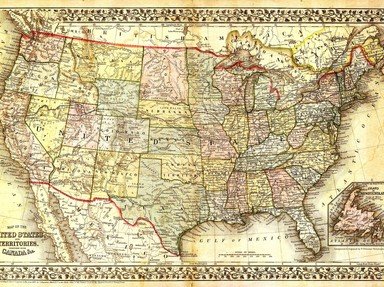Quiz Answer Key and Fun Facts
1. Was there an actual person named Harper who had a ferry at the site of modern-day Harpers Ferry?
2. What future US president visited the site of Harpers Ferry in 1783 and when he looked at it from a rock that now bears his name, said it was "perhaps one of the most stupendous scenes in nature"? He knew something about untamed land, as he bought hundreds of thousands of square miles of it when he was president.
3. In 1796, the US government purchased the land now known as Harpers Ferry, for a special purpose. There was only one other site like this in the US, at Springfield, Mass., but both were vital to the country. What was the purpose?
4. Two improved, modern forms of transportation reached Harper's Ferry in 1833 and 1834, eventually connecting it with Washington, DC, and Baltimore, helping the arsenal and armory bring raw materials in and distribute finished goods out. What were they?
5. Abolitionist John Brown tried to start a widespread slave uprising in 1859 using weapons taken from Harper's Ferry, but was soon captured by local Marines led by a US Army lieutenant colonel. Who were the colonel and his aide de camp, a lieutenant, both of whom would distinguish themselves later?
6. In May of 1861, near the beginning of the Civil War, Gen. "Stonewall" Jackson devised a clever plan to capture over half a dozen heavy pieces of enemy equipment at Harpers Ferry. Or maybe he didn't. The story is hugely controversial among historians today, some of whom argue there's no evidence it ever happened. If Gen. Jackson did pull off the trick, what did he manage to capture?
7. The Battle of Harper's Ferry, Sept. 12-15, 1862, began with Confederate General Stonewall Jackson surrounding the Union-occupied town by placing artillery on the high ground around it. Who won the battle?
8. The Niagara Movement held its second annual meeting at Storer College in Harpers Ferry, and members walked to see where John Brown had made his stand, taking off their shoes in reverence. What was the Niagara Movement?
9. What famous trail runs through Harpers Ferry on its way from Maine to Georgia?
10. In 1944, a major step forward took place in recognizing the historic aspect of Harpers Ferry as a whole. What was it?
Source: Author
littlepup
This quiz was reviewed by FunTrivia editor
gtho4 before going online.
Any errors found in FunTrivia content are routinely corrected through our feedback system.

